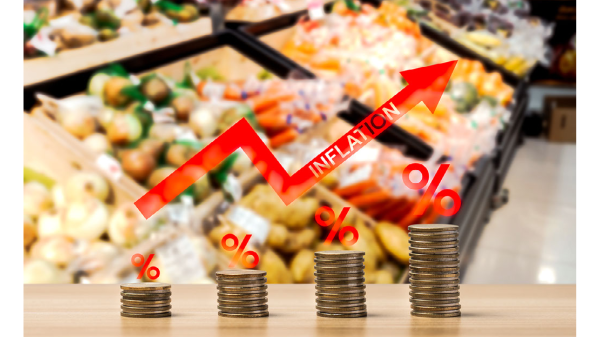The federal government reports inflation is easing, but consumers say it’s much stronger than what the government reports.
Who’s right, and how can the produce industry address this?
First, they’re both right.


The Labor Department reported the Consumer Price Index rose 0.2 percent in July over June, the same amount posted in June, with overall inflation 3.2 percent over a year ago. Year-over-year food inflation was about 5 percent this summer.
That doesn’t seem that bad.
But a dunnhumby consumer survey this summer reported that consumers’ perceived food inflation was 22.6 percent. The disconnect is because consumers don’t think in terms of this year over last year. They think in terms of “how much this costs compared to how much this used to cost.”
Food inflation was 5 percent annually this summer, but that’s on top of 10 percent last year, 6 percent in 2021 and 4 percent in 2020. Inflation is cumulative, so that means food inflation is up more than 25 percent above pre-pandemic. Of course, it’s more for certain foods.
That’s real pain that the food industry has to address.
That same dunnhumby survey found that 30 percent of Americans say they have skipped meals, with the highest groups being in the 18-34 and 35-44 year old categories, or those most likely to have children at home.
While this is disturbing from a humanitarian point of view, it should also be to the fresh produce industry because consumers are not likely skipping a balanced meal and just having a piece of fruit or salad instead.
They’re more likely replacing a nutritious meal that includes fruits or vegetables with a cheap, less nutritious snack, like a protein bar or bag of chips.
The survey broke down the importance of price and quality in grocery categories, and food insecure households placed a higher importance on price, as we would suspect. By category, seafood was the category all consumers placed the highest importance in relation to price, but it’s followed by fresh produce.
It shows that there’s an opportunity for tying fruits and vegetables into a value/quality proposition.
Throughout 2023, many retailers have been promoting price savings, and these should continue well into the future. It’s clear retailers hear consumers and are doing things to address it.
The survey also mentions that food-insecure households are more likely to be subject to time pressure. They work long hours and aren’t as likely to take the time to prepare nutritious meals.
Fresh produce companies must continue to innovate to provide healthy foods that are easy to prepare and compete on price with less healthy foods.
They also should continue to invest in snack options. Consumers will keep skipping meals due to financial pressure, and they need to be reminded of the options in the produce department.



